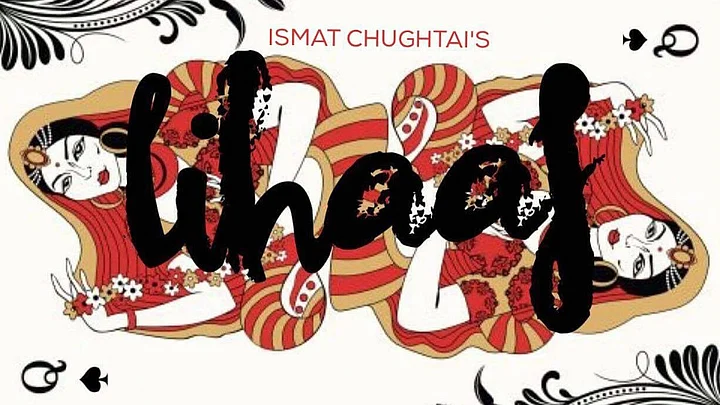Whoever said the young of this generation don’t read literature anymore should go see Tricycle Production’s novel recreation of Ismat Chughtai’s ‘Lihaaf’.
The under-25 trio, Kartavya Sharma (Drama School, Mumbai), Radhika Chopra (Sarah Lawrence College, New York) and Rohit Mehra (London International School of Performing Arts) direct and act in the play, playing multiple characters with smooth transitions. Daring and fresh, the play incorporates shadow theatre, folk music and physical theatre to tell the story of a young girl coming to terms with a same-sex relationship and abuse in the times of nawabs, begums and maulvis.
Ismat Chughtai’s ‘Lihaaf’ is a story that made the 20th Century Urdu writer famous. Everyone reads it, and reads nothing but it, by her. It is the story of Begum Jaan, a breathtaking beauty slowly withering away with a perpetual itch ‘under her skin’, neglected by her rich husband, the Nawab, who is more excited by young boys. She finds pleasure and comfort in her masseuse, Rabbu, who eventually becomes a lot more. The story is narrated by Begum Jaan’s young and rebellious niece, Ismat, who while living with her, is exposed to this then-taboo sexual liaison which manifested itself as shadows under the moving lihaaf every night. Until one day, when Rabbu leaves for her village, Begum Jaan crosses a line with Ismat.
Sharma, Chopra and Mehra take this story and create an avant-garde play, with engrossing acting, a minimalist set with no props save a wooden partition and on-point light design by Adi Shastri, which could be a character in the play itself.
Production Takes the Cake
Dressed in bottle green pyjamas and kurtas, the characters were distinguished by the headgear or wigs the trio put on – Mehra played both the nawab and the androgynous masseuse, Chopra the begum and the maid, and Kartavya Sharma acted as the tomboy Ismat. Not a second of silence or stillness presents itself on stage in the way of changing scenes or costumes. With no props to distract the audience, the trio act with their entire bodies, swiftly changing from one character to another, often on stage with the audience in full view.
Obscenity, for which Chughtai was charged for writing the story, is creatively side-stepped by the trio; in one scene the androgynous, four-handed Rabbu (which was really two people under a burkha-like outfit) mimics giving a massage with strange hand movements while a reclined Begum Jaan lays far behind her on stage, wincing and moving to the increasing momentum of Rabbu’s hands.
The vigorous shadows under the lihaaf at night become shadows created by two of the three actors behind the lit partition, as Ismat lays on the dark floor in front, fervently reciting verses from the Quran to a rising table rhythm by a musician in the wings. The same musician hums a haunting lullaby at the beginning of the play’s prologue as the trio stand on a dimly-lit stage for over a minute without speaking or moving, till Chopra and Mehra slowly slip a white niqaab over Kartavya Sharma’s head, transforming a grown man into a young girl with wide, mischievous eyes.
A Fresh Take
Chughtai's short story is written in the first-person with a young Ismat as the narrator. There is very little dialogue in the visually rich story, which is seamlessly converted into scenes with developed peripheral characters on stage. What is mentioned as the palace maids gossiping about Rabbu and Begum Jaan’s illicit relationship in a few lines in the story has been shaped into repeated scenes between three maids, played by the trio again, which add comic relief to an otherwise dark story with none.
At one point in the original story, Ismat hears Rabbu and Begum Jaan fighting for some reason under the lihaaf, after which Rabbu leaves the next day. The trio fill in the gap, extrapolating what Chughtai indirectly wanted to convey, by play-acting Rabbu’s jealousy at Begum Jaan’s growing fondness for her little niece. By doing this, they bring in Rabbu’s sexual politics which exploits the Begum’s need for physical pleasure, along with other concepts of the gender binary, misogyny and patriarchy throughout the play.
The story is less about a tantalising lesbian relationship and more about sexual abuse. This is a nuance that has often got lost in Chughtai’s frenzied description of the lihaaf every night, and the fact that she wrote about quivering female orgasms in the 20th century – even elliptically. The young trio of Tricycle Productions manage to put their finger precisely on the central nerve of the story. While no judgement is made on the relationship between the two women, young Ismat’s experience of abuse remains the play’s pivot.
In the last scene, Sharma stands quietly, like stone, in the dark at the center of the stage. In front, stand Ismat’s parents at the ends of a faint V-shaped spotlight continuously try to speak to her about her time at Begum Jaan’s haveli. As the lights become dimmer, Ismat’s loss of innocence becomes clearer – and then, fade to black.
(This story was first published on 5 April 2017. It has been reposted from The Quint’s archives to mark Ismat Chughtai’s birth anniversary.)
